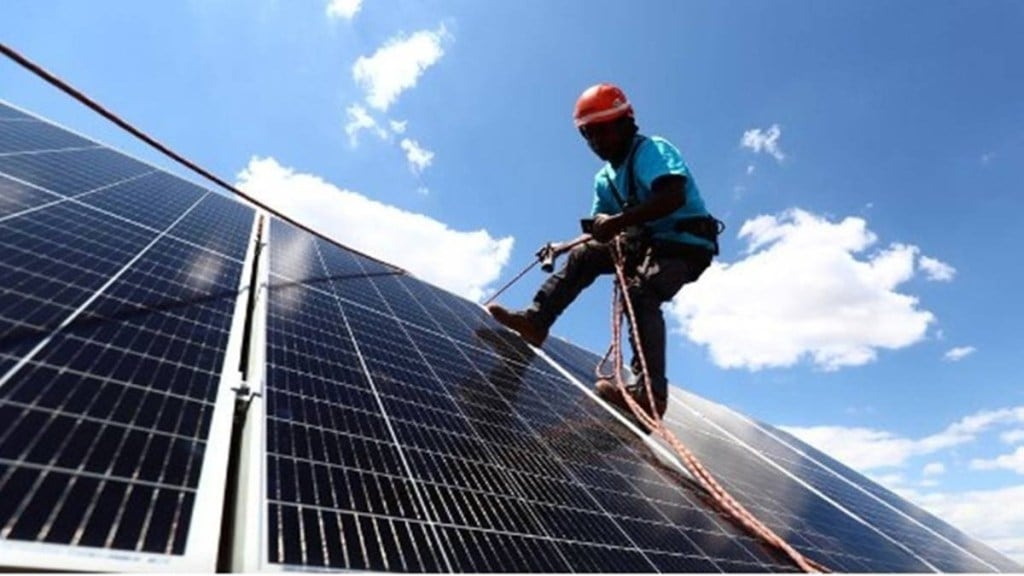The latest antidumping duty investigation petitioned by the Alliance for American Solar Manufacturing and Trade on solar module imports from India, Indonesia and Laos, could potentially hurt Indian solar exports, analysts say.
This comes following the imposition of antidumping duties on four southeast Asian countries (Cambodia, Malaysia, Thailand and Vietnam) which had erupted expectations of a revival in the country’s solar exports.
The US solar manufacturers including First Solar, Mission Solar Energy, and Qcells, with Talon PV Solar Solutions last week filed new antidumping and countervailing duty (AD/CVD) petitions with the US International Trade Commission (ITC) and the US Department of Commerce.
The petitions seek investigations into illegal trade practices by largely Chinese-owned manufacturers operating in Laos and Indonesia, as well as companies headquartered in India, which are harming the US solar manufacturing industry by violating trade laws, it said. In addition to a range of alleged illegal subsidies, the petitioners identified dumping margins of 89.65% for Indonesia, 245.79 – 249.09% for Laos, and 213.96% for India.
Short-term disruption
This investigation has the potential to disrupt exports, noted Kotak Institutional Equities in its report. “Within our coverage, we see Waaree, with 57% of order books exposed to the US, being impacted. We find domestically exposed Premier Energies less at risk,” it said.
After the investigation, a preliminary duty could potentially be followed by a final duty.
“Any acceleration in short-term demand due to the impact of Big Beautiful Bill (tax credits for IPPs if renewable projects are completed by 2027 or start construction by July 4, 2026 and enter service by 2030) could get impacted due to these investigations. Local US manufacturing capacity of 1.6 GW could provide some cushion to the impact of lower exports. Adani Enterprises, Vikram Solar have been other major exporters out of India,” Kotak said in its latest report.
Solar module capacity in the US has now reached ~52 GWdc (gigawatts direct current); as a result of which, US imports have seen a 42% decline during the first five months.
Most of the impact of AD/CVD duties have translated to higher volumes for Indonesia and Laos. Indian volumes have remained steady (300 MW on a monthly basis), the brokerage highlighted.
“On the cell side, we see Malaysia and South Korea dominating cell imports into the US; India’s share remains miniscule due to higher domestic pricing and lack of capacity,” it said.
Rising capacity
Ashish Agarwal, Head, Solar & Storage, BluPine Energy said that the move could pose near-term challenges for Indian solar manufacturers as a significant share of their exports is directed to the US market. However, this impact may be mitigated over time by the robust domestic policy push in India, he added.
Over the past five years, driven by multiple barriers to Chinese solar products, US module imports have been dominated by four countries, i.e., Malaysia, Vietnam, Thailand and Cambodia, which accounted for over 80% of total US module imports. Over the past couple of years, driven by surging domestic solar module manufacturing capacity, India has become the fifth-largest exporter, accounting for 7-8% of imports.
In the calendar year 2024, the US imported 54 GW worth of solar modules, of which India exported 4.4 GW, translating into ~8% of total volumes, as per data from Kotak.
Indonesia and Laos have been the key beneficiaries of anti-dumping and countervailing duties on solar imports from Cambodia, Malaysia, Thailand and Vietnam.
“In the short term, additional duties and stricter compliance requirements could affect price competitiveness and shipment schedules for companies exporting to the US. However, these petitions also signal a structural shift in global supply chains, where India’s role as a reliable and competitive partner for clean energy technologies is becoming increasingly prominent,” said Prashant Mathur, CEO, Saatvik Green Energy.
India’s solar manufacturing capacity has grown considerably, with current installed capacities of approximately 74 GW for modules and 25 GW for cells.
Looking ahead, India is expected to achieve 125 GW of module and 40 GW of cell manufacturing capacity by 2030, strengthening its ability to serve key markets such as North America, Europe, and MENA, Mathur noted.
While US solar module manufacturing capacity has reached 51 GW, cell capacities are significantly lagging behind at only 2 GW. Although more than 50 GW of cell capacities have been announced, only 12 GW are currently under construction.
As per Solar Energy Industries Association (SEIA), US cell capacity can rise to 9 GW by year-end, implying a massive void, which will need to be filled by cell imports.
“US cell imports have seen a pick up over the past year driven by higher domestic module manufacturing and lack of US cell capacity (cell imports by US in the first five months of 2025 is ~9.6 GW versus 13.7 GW in CY2024). Despite the seemingly large opportunity, Indian solar manufacturers have not yet tapped the US cell export market on account of limited manufacturing capacity, higher realization in the domestic market ($15 cents/watt in India versus $12-14 cents/w in US) and significant competition from other Asian manufacturers,” said Kotak.
However, the firm noted that with Indian cell capacity surging at a brisk pace and domestic realization likely to come down FY28 onwards, it is critical to observe whether large Indian manufacturers can successfully tap this opportunity. “Any AD/CVD duties could also be a dampener to long-term Indian cell opportunity,” it further added.
